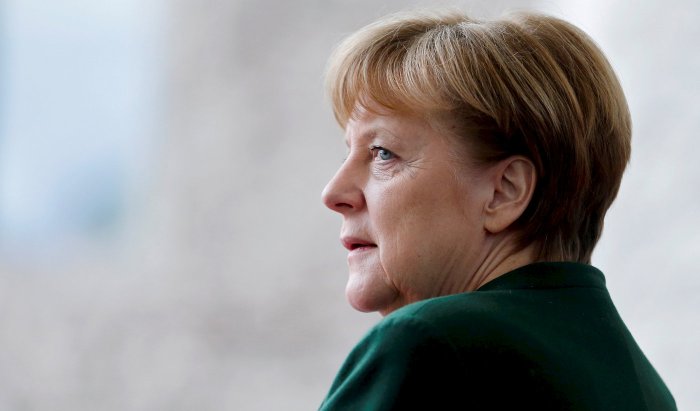By Alastair Macdonald
BRUSSELS (Reuters) – Britain’s ruling Conservative party has determined that either Theresa May or Andrea Leadsom will succeed David Cameron as prime minister on Sept. 9 and so negotiate British withdrawal from the European Union. Narrowing the choice to May, the interior minister who quietly backed Cameron’s pro-EU side in the June 23 Brexit referendum, or junior energy minister Leadsom, who campaigned strongly to leave, brings a pixel of clarity to what remains a very foggy outlook for the coming years of EU-UK relations. Many scenarios are feasible. The following is an attempt to sketch out the most likely paths through the fog of political and economic uncertainty that will lead to Brexit:
SUMMER HAZE
Until there is a new premier, who must then appoint a new cabinet balancing pro- and anti-EU forces in their divided party to retain parliamentary support, few decisions can be made. Much attention will be on polls of the 150,000 Conservative electors. EU leaders insist they will not allow any negotiation before Cameron’s successor formally notifies them Britain is leaving under Article 50 of the EU treaty. However, London and Brussels are building teams of negotiators and diplomats are working to chart possible options and determine potential bargaining chips. Despite talk that a new leader, or parliament, judges or the Scottish government, might try to block the referendum outcome, May and Leadsom have committed to Brexit. The EU would not and cannot make Britain leave but few leaders expect any volte face. Cameron wants to replace Britain’s European Commissioner, Jonathan Hill, who resigned, but confirmation is unlikely before the Commission and EU parliament break for August. On Friday, Cameron’s spokeswoman said Britain had nominated its current ambassador to France, Julian King, as a new commissioner. HOT SEPTEMBER
The debate will heat up as the battle lines become clearer.
On Sept. 9, May or Leadsom will be prime minister. Both say they want access to the EU market in goods, services and capital and will respect the vote for an end to EU law in Britain and fewer EU immigrants — “cake and eat it” in the view of critics. The 27 other states, whose leaders next meet in Bratislava on Sept. 16, insist the price of market access is EU rules and free movement of EU labor. To give way on that would, they fear, inspire eurosceptics elsewhere to unravel the Union. Ultimately, a new relationship between Britain and the EU is likely to fall between those poles, with both using fear of disruption in trade and public affairs as leverage. Timing will also be key, as political and economic events, some scheduled, others unpredictable, shift the balance of advantage. SETTING FLIGHT TIME – ARTICLE 50
A first big decision for the new premier, left to her by Cameron to the annoyance of the EU, is whether and when to start the formal exit schedule under Article 50. May has said she sees no rush. Brexiteer Leadsom said she would do it fast. Both may be constrained by cabinet and official advice. There is also a push to give Britain’s pro-EU parliament a say. Never before used, and designed in part to discourage its use, Article 50 gives a state two years to work out an amicable separation. If no deal is struck with a weighted majority of the others, it is simply cast out. So triggering the deadline flips negotiating power from London over to Brussels. Some say Britain should not formally notify until it has a deal. Some British lawyers say it could later withdraw its notice to leave and end up remaining a member, either without special terms secured by Cameron that were killed by the referendum or maybe with another deal. EU officials say that, like extending the two-year timetable, cancelling the Article 50 process can be vetoed by any other state. Many oppose giving Britain favors. The EU is trying to pressure Britain to commit to leaving by early 2019 by urging London to respect the popular vote and end uncertainty, and a mantra: “no negotiation before notification”. It has no clear legal power to hold Britain to an exit schedule, though has some levers against disruptive members. AUTUMN STORMS
In theory, nothing changes in Britain’s membership of the EU until it leaves. In practice, businesses and people are already adjusting plans, fearing new trade barriers will go up; British influence in Brussels is fast evaporating, even as it continues to pay its budget dues and remains open to EU migrant workers. Autumn will see the Union reviewing its conflict with Russia and efforts to strike a U.S. trade deal. There are also fears of new turbulence in the euro zone economy and in Italy, where a constitutional referendum could see Prime Minister Matteo Renzi defeated by insurgent opponents skeptical of current EU rules. All that may well focus minds on both sides of the Channel on negotiating a new relationship, whatever the formalities of Article 50. Brace for blustery exchanges if London fights shy of committing to the two-year deadline but expect efforts to sketch out possible solutions — and loud arguments within Britain and among the other 27 EU states on what compromises are acceptable. The 27 are trying to stick to a common line, seeking a start to formal talks “as soon as possible” to ease uncertainty.
But British diplomats will be probing for divisions to gain leverage: Germany and northern allies may go a long way to keep Britain close and avoid disrupting business; France and Belgium lead hardliners, long exasperated by British obstruction of EU integration and fearful of inspiring anti-EU forces elsewhere, which are readier to push Britain out fast and let it suffer. WHAT IS YOUR ETA?
EU leaders and institutions are particularly anxious to wrap up Britain’s exit by early in 2019. If it stays on while in the process of leaving that could mess up elections to the European Parliament in May 2019 and the formation of a new Commission, the EU executive by November that year, as well as complicate the start of negotiations on a new EU budget for 2021-27. However, a series of national elections next year, notably in France in April-May and Germany around September, may limit how far Europe’s big powers can proceed in Brexit negotiations next year. A Dutch election early in 2017 and a possible Italian vote if Renzi loses the looming referendum may also complicate matters, as eurosceptics are among the main opposition forces. ONE FLIGHTPATH, OR TWO?
Article 50 sets a two-year time limit — extendible only by unanimity — for a withdrawal treaty that is likely to deal with fairly technical priorities, such as: unwinding Britain’s share of the EU budget, including cash for British firms and people; settling residence and working rights of British and EU citizens who will be on the “foreign” side of a new border; setting new EU-UK frontier arrangements, including with Ireland and Gibraltar; rights of British EU employees and removal of British EU judges and members of the EU parliament and Commission. This “divorce settlement” must be agreed by a weighted majority of the 27. But the treaty also says these negotiations “take account of” a future relationship between the EU and Britain. No EU-UK treaty can be sealed until Britain is no longer a member. And it may take longer than two years to complete, and would normally be required to be agreed unanimously by all remaining states. EU and British officials expect negotiations, on divorce and future relationship, to progress in tandem. Should divorce precede a new deal, transitional arrangements could be agreed, say to avoid imposing new tariffs, until the new relationship was set. LANDING ZONE
What the final arrangements between Britain and the European Union will look like are anyone’s guess right now. Many on both sides refer to “Norway plus”, “Norway minus” and a combination of those, referring to Norway’s extensive access to EU markets in return for budget contributions and open immigration. Britain will seek to use its economic weight to cut a custom-made deal. Some Brexiteers, however, have pushed for a more radical cutting of ties with Europe, rejecting the compromises the EU is demanding in return for market access. In the meantime, impending Brexit is likely to change the British economy and society as part of a dynamic process that makes it harder to predict what either side will value most highly in 2019. Among factors are pressure in pro-EU Scotland for independence and in Northern Ireland for unification with EU member state Ireland. The EU too is changing, with some states keen for closer ties and others keeping their distance, and that too will affect how negotiations will work, to the point that some do not rule a major upheaval of the whole Union, with or without Britain. (Editing by Dominic Evans)


















